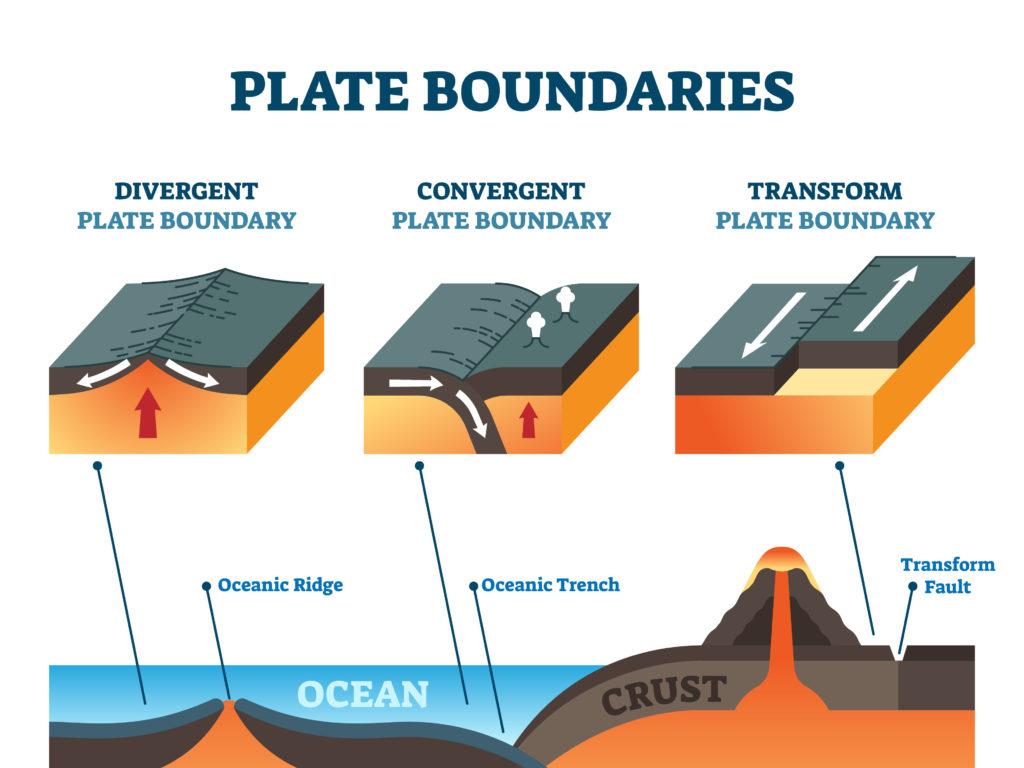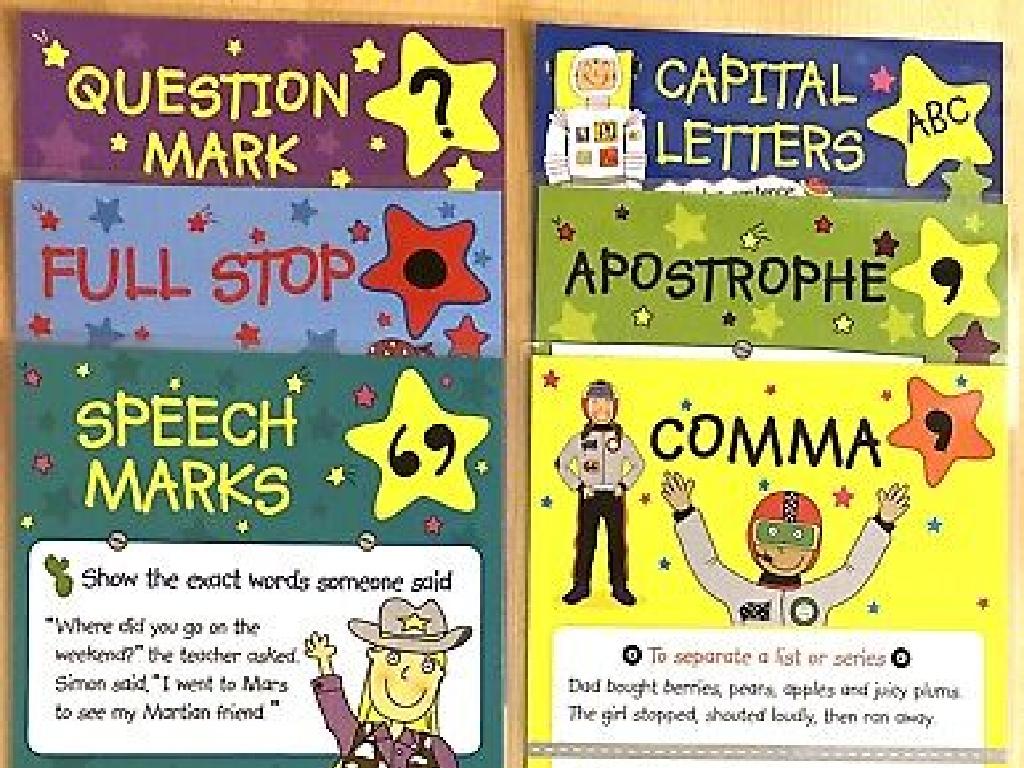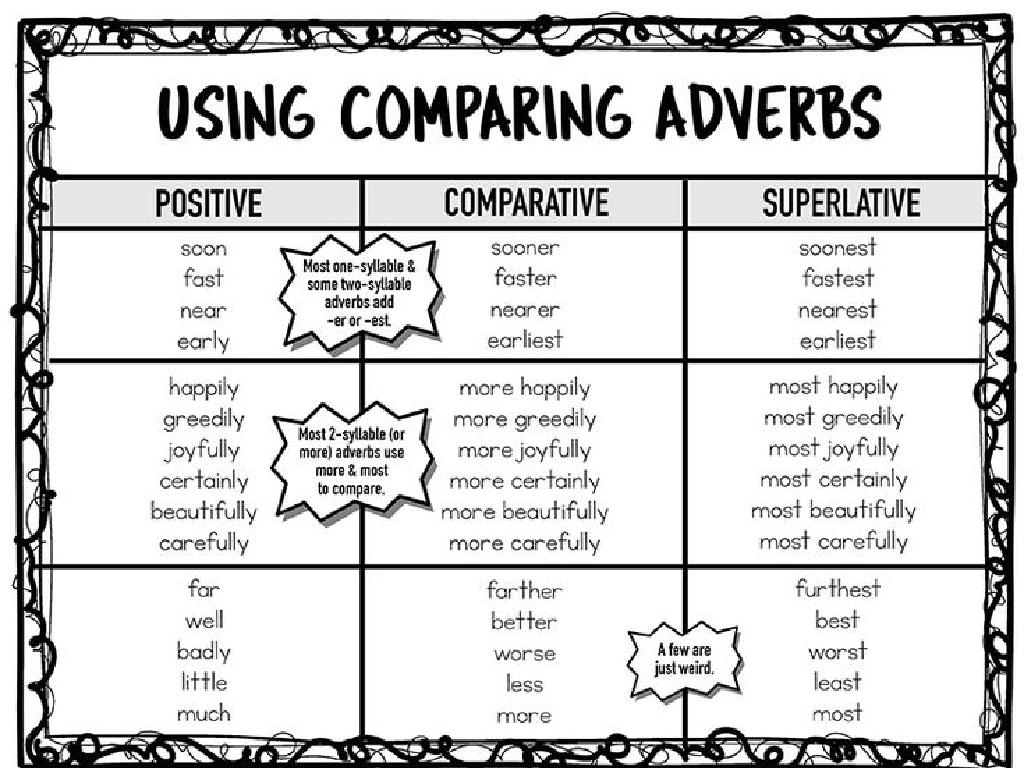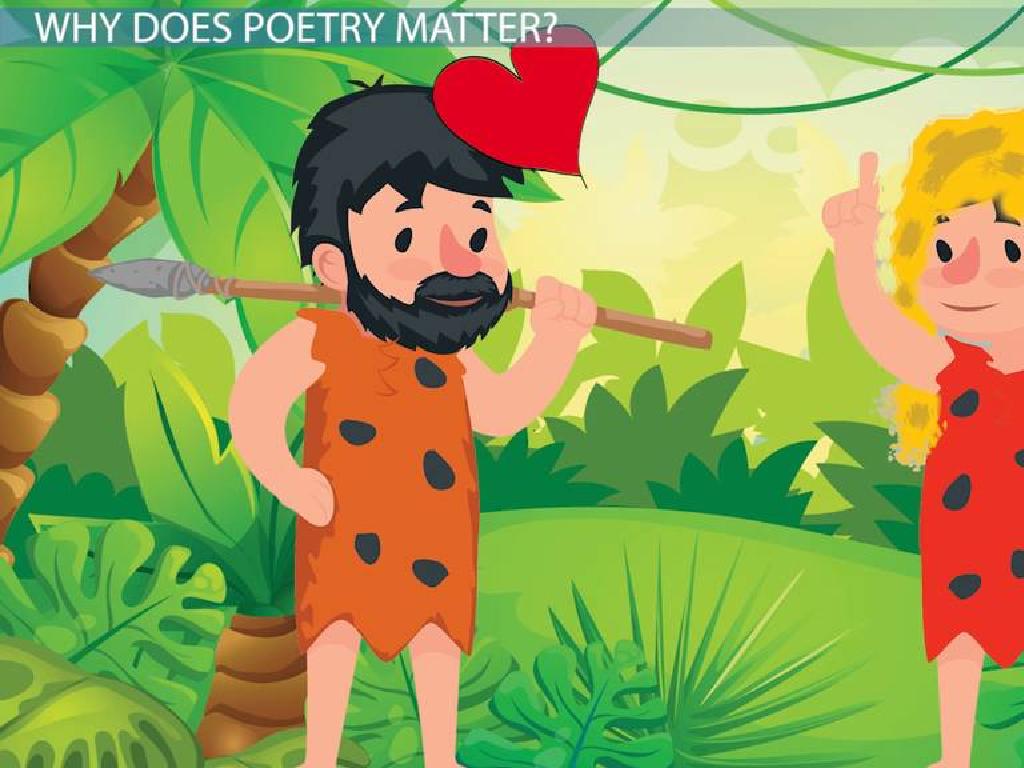Find The Next Shape In A Pattern
Subject: Math
Grade: Kindergarten
Topic: Patterns
Please LOG IN to download the presentation. Access is available to registered users only.
View More Content
Welcome to Patterns!
– Today’s lesson: Learning about patterns
– What is a pattern?
– A pattern is a design that repeats
– Patterns are all around us
– Like stripes on a shirt or petals on a flower
– Let’s find patterns together
|
This slide is designed to introduce Kindergarten students to the concept of patterns. Start the lesson by explaining that a pattern is a repeating design or sequence. Ask the children if they know what a pattern is to engage them and assess their prior knowledge. Highlight that patterns can be found everywhere in our daily lives, such as in clothing, nature, and even in our routines. Encourage the students to look around the classroom or think of examples from home. The goal is to make them aware of patterns and excited to discover more. For the activity, you can have different stations with various patterned objects or images, and let the children practice identifying and continuing the patterns they see.
Exploring Patterns
– What is a pattern?
– A pattern repeats in a way we can guess what comes next.
– Patterns with colors and shapes
– Like red, blue, red, blue or circle, square, circle.
– Recognizing simple patterns
– Predicting the next in a pattern
– If we see circle, square, circle, what comes next?
|
Introduce the concept of patterns to the students by explaining that a pattern is a sequence that repeats in a predictable way. Use tangible examples like alternating colors or shapes to illustrate the concept. Show them simple patterns and ask them to recognize the sequence. Then, challenge them to predict what comes next in a pattern. This will help them understand the concept of patterns and how to identify them. Encourage the students to think of patterns they encounter in their daily lives, such as the sequence of colors on a crosswalk signal or the arrangement of tiles on the floor.
Recognizing Patterns in Shapes and Colors
– Patterns can repeat
– Like circle, circle, square, square, then what comes next?
– Patterns have different sequences
– Maybe red, red, blue, blue, or triangle, triangle, circle, circle
– Spot the pattern sequence
– Look at the order of shapes and colors and try to find what comes next
– Predict the next in the pattern
|
This slide introduces the concept of patterns to Kindergarten students, focusing on the recognition of sequences in shapes and colors. Start by explaining that patterns are things that repeat in a certain order. Show them simple examples like alternating colors or shapes. Then, ask the students to observe and determine what comes next in a given pattern. Use real-life examples like beads on a necklace or blocks in a tower to make it relatable. Encourage the children to explain their reasoning for choosing the next shape or color in the pattern. This activity will help develop their critical thinking and problem-solving skills.
Creating Our Own Patterns
– It’s time to make a pattern
– Use blocks, stickers, or fingers
– Choose what you’ll use to make your pattern
– Patterns must repeat
– A pattern is something that comes over and over!
– Show your pattern to the class
– Be ready to present your pattern
|
This slide is designed to engage Kindergarten students in an interactive activity where they create their own patterns. Encourage them to use tangible items like blocks or stickers, which will make the concept of patterns more concrete. Remind them that a pattern is a sequence that repeats. Provide examples of simple patterns to get them started, such as ‘red block, blue block, red block, blue block’ and then let them create their own. As they work, circulate the room to offer help and ensure they understand the concept of repeating sequences. Plan for each student to present their pattern to the class, which will reinforce their understanding and give them a sense of accomplishment. Prepare to praise their efforts and creativity, and offer suggestions for more complex patterns as they grasp the basic concept.
Finding the Next Shape in a Pattern
– Observe the given pattern
– Identify the repeating shapes
– Shapes repeat in a specific order, that’s the pattern
– Practice with example patterns
– We’ll look at simple patterns and find what comes after
– Guess the next shape together
|
This slide is aimed at helping Kindergarten students recognize patterns and predict the next shape in a sequence. Start by showing them a simple pattern and ask them to observe it closely. Explain that patterns are made up of things that repeat over and over in the same order. Work through a few examples as a class, pointing out the repeating parts of the pattern. Then, ask the students to guess what shape would come next based on the pattern they’ve identified. Encourage participation and praise correct answers to build confidence. For the activity, have several patterns ready for the students to practice with, ensuring they are simple and clear to understand for this age group.
Pattern Games: Guess the Next Shape!
– Patterns are fun with games
– Guess the next shape in the pattern
– Look at the shapes in order, what comes next?
– Shout out your answers
– Be loud and proud with your guess
– Let’s play and learn together
|
This slide introduces a playful activity to help Kindergarten students recognize and predict patterns. The game involves showing the students a sequence of shapes and asking them to guess what shape comes next. It’s a group activity that encourages participation and excitement. As a teacher, prepare a series of patterns with varying levels of difficulty. Use shapes that the students are familiar with, and ensure that the patterns are not too complex. The goal is to make learning about patterns an interactive and enjoyable experience. Provide positive reinforcement as students make their guesses, and guide them towards understanding the logic behind patterns. This activity will help develop their critical thinking and pattern recognition skills.
Class Activity: Pattern Circle Time!
– Sit in a circle with friends
– Add a shape to our pattern
– Choose any shape you like to add next
– Make the pattern grow
– Can we make it around the whole circle?
– Keep going until it’s time to stop
|
This activity is designed to help Kindergarten students recognize and create patterns, a fundamental math skill. As the teacher, you’ll facilitate the activity by having the students sit in a circle. Each student will then have a turn to add a shape to the class pattern. Encourage them to observe the existing sequence to determine which shape comes next. Possible shapes include circles, squares, triangles, and rectangles. The goal is to continue the pattern until the circle time ends. This activity promotes teamwork, observation skills, and pattern recognition. Be prepared with a variety of shape cutouts or cards for the students to choose from. Praise their efforts and the patterns they create together.
Review and Goodbye: Pattern Pioneers!
– Excellent work on patterns today!
– Patterns help us predict what comes next.
– Like stripes on a shirt or petals on a flower.
– Keep practicing patterns everywhere.
– Try with toys, snacks, or even dance moves!
– Show and tell your patterns next time!
– Bring your favorite pattern to share with the class.
|
Today’s lesson was all about recognizing and predicting patterns, a fundamental math skill that helps with critical thinking. Reinforce the concept that patterns are sequences that repeat in a predictable way. Encourage the children to observe patterns in their daily lives, such as in nature, at home, or in their routines. Suggest they practice creating their own patterns using objects like blocks or drawing them on paper. For the next class, plan a show-and-tell activity where each child can present a pattern they’ve found or made, fostering a sense of accomplishment and sharing.





